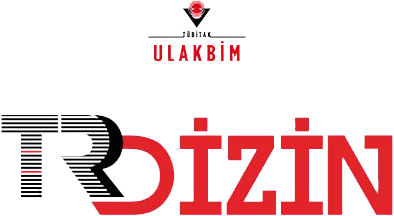
Bu eser Creative Commons Alıntı-GayriTicari-Türetilemez 4.0 Uluslararası Lisansı ile lisanslanmıştır.













Anti-dsDNA antikorlarının saptanmasında üç ELISA yönteminin CLIF testiyle karşılaştırılması
Feyza Çetin, Alparslan Toyran, Özlem Aytaç, Feride Alaca Coşkun, İpek Mumcuoğlu, Feyza Alp, Altan AksoyAnkara Numune Eğitim Araştırma Hastanesi, Tıbbi Mikrobiyoloji, AnkaraGİRİŞ ve AMAÇ: Sistemik lupus eritematozus (SLE)
hücre çekirdeğindeki antijenlere karşı antikorların
oluşturduğu otoimmün bir hastalıktır. Amerikan
Romatoloji Derneği (ACR) kriterlerine göre SLE
tanısında kullanılan immünolojik parametreler anti
nükleer antikor (ANA) ve anti-dsDNA otoantikorlarıdır.
Bu çalışmada anti-dsDNA antikorların saptanmasında,
CLIF yöntemi referans yöntem kabul edilerek, üç farklı
ELISA kitinin özgüllüğünün araştırılması amaçlanmıştır.
YÖNTEM ve GEREÇLER: Çalışmaya 1 Mayıs – 31 Temmuz
2013 tarihleri arasında hastanemiz mikrobiyoloji
laboratuvarına gönderilen klinik olarak SLE tanısı almış
olan 81 hastanın serum örnekleri dahil edilmiştir. Bu
serumlarda ANA varlığı öncelikle immünfloresan antikor
(IFA) yöntemiyle araştırılmıştır. Pozitif serum örnekleri
-80 OC’de prospektif analiz için saklanmış ve aynı gün
dört farklı anti-dsDNA testi ile çalışılmıştır. Bu testler;
üç adet anti-dsDNA ELISA kiti; CHORUS dsDNA-G
(DIESSE Diagnostica Senese, İtalya), Anti-dsDNA-Ncx
ELISA IgG (EUROİMMUN, Almanya), QUANTA Lite dsDNA
SC ELISA (INOVA Diagnostics, Kaliforniya) ve CLIF testi
(Crithidia luciliae anti-dsDNA, EUROIMMUN, Almanya)
idi.
BULGULAR: Hastaların IFA yöntemi ile ANA paternleri;
%35,8 homojen patern, %22,2 homojen+diğer patern,
%24,7 granüler patern, %8,7 granüler + diğer paternler,
%7,4 nükleolar patern ve %1,2 sentromer patern olarak
belirlenmiştir. Bu sonuçlara göre SLE hastalarında en sık rastlanan ANA paterni homojen patern olmuştur.
Çalışılan 81 serum örneğinin anti-dsDNA pozitiflikleri;
CLIF yöntemi ile 22 (%27), INOVA ile 46 (%56), EUROIMMUN
ile 34 (%41), CHORUS ile 50 (%61) saptanmıştır.
CLIF referans yöntem kabul edildiğinde ELISA kitlerinin
özgüllükleri ve pozitif prediktif değerleri (PPD) sırasıyla;
CHORUS ile %50, %42; INOVA ile %54, %41; EUROIMMUN
ile %71, %50’dir.
TARTIŞMA ve SONUÇ: ANA pozitif olgularda incelenen yöntemler
içinde Anti-dsDNA-Ncx ELISA IgG yöntemi diğer
yöntemlere göre daha yüksek özgüllük ve PPD’e sahiptir.
Bu çalışmanın CLIF yöntemi kullanılmadığında seçilecek
ELISA yöntemi açısından laboratuvarlara yol gösterici
olacağı düşünülmektedir.
Comparison of three ELISA methods with CLIF test for detection of Anti-dsDNA antibody
Feyza Çetin, Alparslan Toyran, Özlem Aytaç, Feride Alaca Coşkun, İpek Mumcuoğlu, Feyza Alp, Altan AksoyAnkara Numune Training And Research HospıtalINTRODUCTION: Systemic lupus erythematosus (SLE) is an
autoimmune disease caused by antibodies which produced
against antigens commonly on cell nuclei. According
to the criteria of American College of Rheumatology
(ACR), the immunological parameters which are used for
diagnosis of SLE, are anti- nuclear antibodies (ANA) and
anti- dsDNA autoantibodies. In this study it is aimed to
investigate the specifity of three different ELISA tests by
comparing with CLIF test, as a reference method, for the
determination of anti-dsDNA antibodies.
METHODS: Sera of 81 patients who were diagnosed
as SLE and sent to the Microbiology Department of our
hospital between 1 May - 31 July 2013, were included
in the study. In these sera, ANA positivity was firstly
investigated by immunofluorescence antibody test
(IFA). Positive sera were stored at -80 OC for prospective
analysis and processed with four different anti-dsDNA
assays at the same day. These assays were three antidsDNA
ELISA kits including; CHORUS dsDNA-G (DIESSE
Diagnostica Senese, Italy), anti-dsDNA-Ncx ELISA IgG
(EUROIMMUN, Germany, California), QUANTA Lite dsDNA
SC ELISA (INOVA Diagnostics) and CLIF test (Crithidia
luciliae anti-dsDNA, EUROIMMUN, Germany).
RESULTS: ANA patterns of patients defined by IFA
were determined as; 35.8% homogeneous pattern,
22.2% homogeneous and other patterns, 24.7%
granular pattern, 8.7% granular and other patterns,
7.4% nucleolar pattern and 1.2% centromere pattern. According to these results, most common ANA pattern
in SLE patients was found as homogeneous pattern. AntidsDNA
positiveness of 81 sera samples were 22 (27%) with
CLIF test, 46 (56%) with INOVA, 34 (41%) with EUROIMMUN
and 50 (61%) with CHORUS. When CLIF test was
considered as reference method, specificity, and positive
predictive value (PPV) of ELISA kits were respectively;
50%, 42% for CHORUS; 54%, 41%for INOVA and 71%, 50%
for EUROIMMUN.
DISCUSSION AND CONCLUSION: Anti-ds DNA-NcX IgG ELISA method had
higher specifity and PPV than other tested methods in
ANA positive cases. It is thought that this study may guide
the laboratories to choose ELISA method in lack of CLIF
method.
Makale Dili: Türkçe
(3012 kere indirildi)


